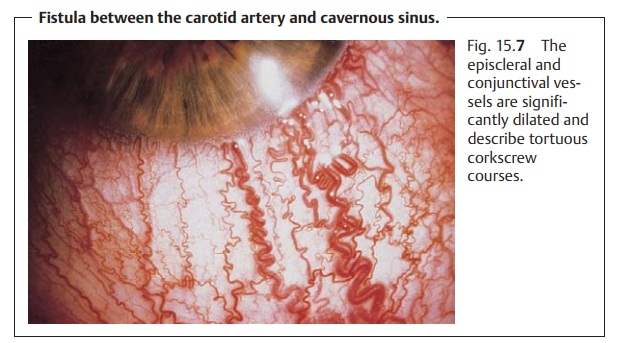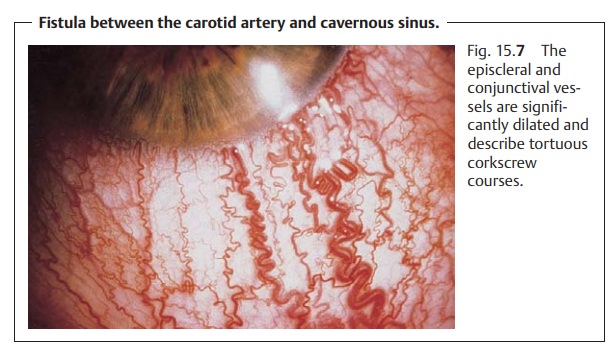Chapter: Ophthalmology: Orbital Cavity
Pulsating Exophthalmos - Vascular Disorders

Vascular Disorders
These changes are rare. The most important and most frequently encountered disorder
in this group is pulsating exophthalmos.
Pulsating Exophthalmos
Definition
Acute exophthalmos with palpable and audible
pulsations synchronous with the pulse in the presence of a cavernous sinus fistula or arteriovenous
aneurysm.
Etiology:
An abnormal communication between thecavernous sinusand theinternal
carotid artery (a direct shunt) or
its branches (indirect shunt) resultsin distention of the orbital venous
network. Eighty per cent of all cases are attributable to trauma; less
frequently the disorder is due to syphilis or arte-riosclerosis.
Symptoms:
Patients report an unpleasant sound in the head that is
reminis-cent of a machine and synchronous with their pulse.
Diagnostic considerations:
The increased venous pressure leads todilationof the episcleral and conjunctival vessels (Fig. 15.7), retinal signs of venousstasis with
bleeding, exudation, and papilledema. Intraocular
pressure is also increased. The
increased pressure in the cavernous sinus can also result in oculomotor and
abducent nerve palsy.

Sounds near the direct fistula are clearly audible with a stethoscope.
Doppler ultrasound studies can confirm a
clinical suspicion. However, only angiography can determine the exact location of the shunt.
Treatment:
Selective embolization may be performed in cooperation with
aneuroradiologist once the shunt has been located.
Small shunts may close spontaneously in
response to pressure fluctua-tions such as can occur in air travel.
Related Topics